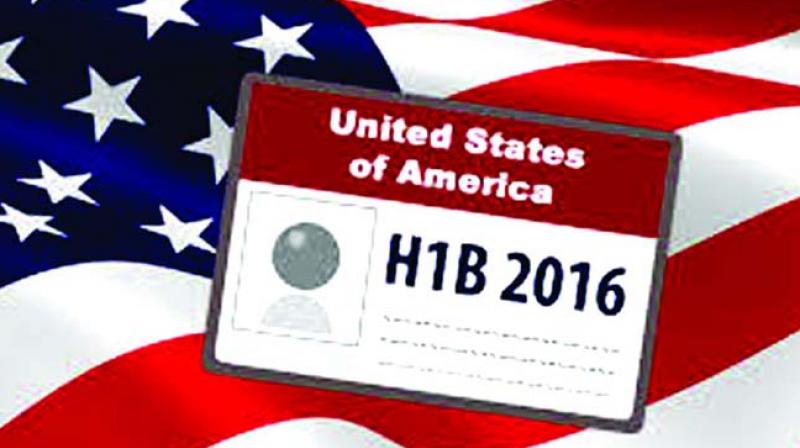H-1B curbs: Can Indian IT benefit too?

One thing is for sure, the new Trump administration in the United States has set the cat among the pigeons with the broad immigration reforms and the presidential executive order aimed at US work-visa programmes, including H-1B and L1 visas, used largely by the global knowledge workforce and more so by the Indian IT services industry. In August 2016, Indians held 72 per cent of the total H-1B visas issued worldwide(i). While the executive order does affect other nations — China, Britain and South Korea corner the highest number of H-1B visas after India(ii) — the Indian IT industry would be the hardest hit. Understandably, this has caused concern and confusion in the Indian IT community, which has been leveraging the H-1B visa to relocate IT consultants for delivering onshore technology services to US corporations. There are elements that need more clarity for now. Does the order apply to only the new H-1B visas (to be issued) or to current ones as well? Is this applicable for L-1 visas as well. Will the process of conversion of H-1B visas or L-1 visas to green cards also get modified? When more details about the applicability of the order are known, we will know its full impact.
There is concern because the Indian IT industry will have to modify its approach and align it with the new requirements. The H-1B visa requirements were created for two reasons: first, to bring in the talent required to make the US a technological powerhouse using talent it did not have; second, to accelerate the competitiveness of US businesses across the world. Both these goals have been served well by the H-1B programme. For Indian IT companies, it is a wait-and-watch time. The executive order, I understand, will remain in force for 90 days from the day it is issued. Within those 90 days, the secretary of homeland security needs to review regulations that allow foreign nationals to work in the US and provide an opinion on the regulations that violate immigration laws or are not in the interests of America. There are other hoops through which an executive order must pass: the Supreme Court can overturn an executive order, as it has done several times in the past, on the grounds that the order exceeds the President’s constitutional powers; and finally, while Congress cannot actually block the order, it can rewrite or amend the law or provide greater detail on how the executive must act. Of course, the President has the power to veto what Congress recommends, but surely if it hurts America, the US President will be more pragmatic. It’s all a bit complex and, for the moment, Indian IT companies must hold their anxiety at bay, and be prepared to ride through the next 90 days.
But let’s be a bit balanced about this. For the last 28 years the Indian IT sector has benefited hugely from the programme. In 1989, the minimum wage of $60,000 was established by the programme and it has remained unchanged since. It has now been raised to $130,000. We may choose to debate that the quantum of increase in minimum wages, but the fact that the raise was overdue could be justified. And the problem is not as simple as that. First, the US needs to have the talent with the right education and experience that is needed to deliver these services, and in the numbers that is required. And often, the onshore engineers work in tandem with the offshore engineers to deliver integrated service to customers. The combined expertise and solutions that get delivered add value to US corporations, making them more competitive and also saves time. The Indian IT industry delivers services in combination of “Technology, Process and People”, and of late has been integrating this with “Automation and Analytics”. This will not be easy to replace in the near term simply by changing the visa rules.
Hence, what do we see in the near term, besides some confusion and lack of clarity? New solutions will be designed with a higher offshore content, that now would be more acceptable to US customers, and thereby not increasing their costs. This in turn will be good for India as it would also increase employment in India. Indian companies have already been hiring more US nationals, including hiring from US colleges, and that pace will now increase. The costs of outsourcing for US customers will increase, as some jobs need to be delivered onshore, and the skills needed for this do not exist in the numbers that are required in America. Congressman Zoe Lofgren, who introduced the High-Skilled Integrity and Fairness Act 2017, said that his legislation refocuses the H-1B programme to its original intent — “to seek out and find the best and brightest from around the world, and to supplement the US workforce with talented, highly-paid, and highly-skilled workers who help create jobs here in America, not replace them”. He further said that the new law “offers a market-based solution that gives priority to those companies willing to pay the most.
This ensures American employers have access to the talent they need, while removing incentives for companies to undercut American wages and outsource jobs”. This is the type of goal that every government should ideally have. And there is no doubt that the US courts and Congress will do what is fair and what is best for America. But there are practical considerations as well. Hiring local talent is possible only if the required skill levels exist. At the moment, the US may not have an adequate number of appropriately skilled people. There is a need for the US to put in place larger investments in its education system and refocus a part of it to produce the required skills as quickly as possible. In the meanwhile, companies that cannot do without the skills made available through the H-1B visa will have no choice but to pay more (200 per cent increase in costs related to H-1B talent). For India, this could be a good wakeup call as well. It provides the right impetus to create talent with a higher capability set, increase the IT pool and create deeper innovation that allows an increased number of services to be rendered from offshore locations. As much as President Donald Trump’s executive order will affect Indian IT, one cannot resist thinking of how it will actually benefit the nation in the long term. We will be spurred to produce brighter and better talent because that is what the market demands. In fact, if we bring focus to this task quickly, we may end up with a greater than 72 per cent share of H1-B visas.

